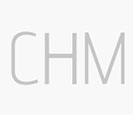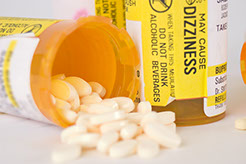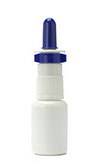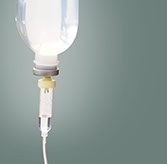Abortive Migraine
Depending on the frequency, severity and degree of disability, and considering other medical conditions, your doctor will help you choose the most effective strategy for aborting your migraine headaches. The purpose of this section is to outline the broad categories of drug treatments and the essentials of an effective abortive game plan to get back into to your life.
For best results, take abortive drugs as soon as you experience signs or symptoms of a migraine as some drugs work at the beginning of the headache and many oral drugs are not absorbed well if the stomach slows down absorption or even becomes paralyzed due to the effect of a migraine on the gastrointestinal tract. Also, some medications aren't recommended if you are allergic or intolerant to the suggested medication, you're pregnant or breast-feeding. Some medications aren't used or have not been studied in children.
ABC's of Migraine Treatment
The following is the ABCs of getting rid of your headache Make sure you do your ABC drugs twice in a day before ever resorting to taking an D drug.
For every migraine headache you should always take an A drug. These are the anti-inflammatories and can be OTC or prescription strength. The B drugs are more migraine specific drugs that are not necessarily pain medications. The C drugs help fight nausea and can help with absorption of the oral medications. The D drugs are saved for the stubborn headaches and are to be taken only after the maximum daily dose of the ABC drugs have been used (usually at least twice per day). These D drugs should not be taken very often as they can easily induce medication over-use headaches (MOH) or can cause serious side effects. E drugs are the extra drugs that either add extra pain control or help with some of the symptoms that can go along with migraine headaches. They are not essential but can be used when needed by migraineurs that understand the ABCs of headache treatment and would like to avoid the D drugs or a visit to the Emergency Room or Acute Care Center.
A Anti-Inflammatories
OTC Drugs (over-the-counter)
These medications, such as ibuprofen, aspirin and naproxen may help relieve mild migraines on their own or in combination with E drugs (see below) such as caffeine or acetaminophen. (Excedrin is an example of a combination A drug plus E drug with aspirin, acetaminophen and caffeine). These OTC A drugs are combined with B drugs for moderate to severe migraines. (Treximet is an example of an A drug naproxen combined with a B drug sumatriptan which has shown in studies to work better than either drug alone.) If taken too often or for long periods of time, even these OTC A drugs can lead to ulcers, gastrointestinal bleeding and rebound headaches (MOH).
Prescription Anti-Inflammatories
The prescription anti-inflammatory drugs such as oral Cambia (micronized diclofenac potassium in powder form), oral and IM shot versions of ketorolac and oral and suppository indomethacin may help abort a moderate migraine headache by themselves and in case of nausea or even vomiting the shot or suppository may still be effective. Cambia does seem to absorb better than pills even if the patient is mildly nauseous. These prescription anti-inflammatory drugs, especially ketorolac, can cause serious side effects if taken too often.
B Migraine Specific Drugs
Triptans
For many people with moderate to severe migraine attacks, triptans are the drug of choice. They are effective in relieving the pain, nausea, and sensitivity to light and sound that are associated with migraines in 70% of patients that take this class of drug. When taken with an A drug, the combination is even more effective. There are eight different drugs in this triptan class of migraine abortive medication. Although, insurance companies want to interchange them, especially substituting ones with generic versions for those that are still only brand, they do not work equally well and may cause unique side effects in different patients. Therefore do not assume that because one triptan did not help or caused an unacceptable side effect, that all the triptans will have the same result. Medications include - from strongest and fastest onset to weakest and slowest onset,( the capitalized name is the brand and if the generic is available it is listed first): Relpax (eletriptan), sumatriptan (Imitrex) pill, nasal spray and shot, rizatriptan (Maxalt), Axert (almotriptan), Zomig (zolmitriptan) pill and spray, naratriptan (Amerge), Frova (frovatriptan). A single-tablet combination of Treximet (sumatriptan and naproxen sodium) has proved more effective in relieving migraine symptoms than either ingredient on its own as it combines an A drug and B drug in one pill. Side effects of triptans include nausea, dizziness, fatigue and chest, jaw and neck tightness (more likely in the stronger and faster onset). You may be able to avoid these side effects of the stronger triptans by taking 1/2 dose at onset of the headache and the other 1/2 dose 30 minutes later. Also, they aren't recommended for people at risk for strokes and heart attacks.
Ergots
Dihydroergotamine (D.H.E. 45 injections, Migranal nasal sprays) is an ergot derivative that is more effective and has fewer side effects than the ergotamine and caffeine combination drugs (Migergot, Cafergot) but is also much more expensive. However, Dihydroergotamine may have a preventative effect too and is much less likely to cause rebound headaches (MOH).
C Anti-Nausea Medication
Because migraines are often accompanied by nausea, with vomiting (due to gastric paresis) or without vomiting, medication for nausea is very helpful for directly treating the headache as well as indirectly by helping with absorption of the A drugs and B drugs.
A frequently prescribed medication is ondansetron (Zofran) pill and under the tongue, because it is not sedating and treats central (brain) causes of nausea. However, it can cause cardiac arrhythmias especially at higher doses and in those patients prone to cardiac abnormalities and when combined with other proarrhythmic drugs.
Metoclopramide (Reglan) is from the family of dopamine blocking drugs that are more sedating and may cause tightness of the jaw and neck but is especially effective as it works in the brain and at the stomach level. It causes gastric emptying which promotes better absorption of other oral treatments taken with it and controls nausea and vomiting. Prochlorperazine (Compazine) and promethazine (Phenergan) work and have side effects similar to metoclopramide but are more sedating. However, they come in pill and suppository form which is helpful to stay out of the ER when vomiting makes keeping oral meds (even metoclopramide for nausea) down. They also may promote sleep which helps break severe migraines as well. Benadryl may help blunt the tightness side effects of metoclopramide, prochlorperazine and promethazine but may also markedly potentiate the sedation side effect.
D Opiates, Barbiturates, and Other Pain Killers
Narcotics - like hydrocodone (Vicodin, Norco etc), hydromorphone (Dilaudid) and oxycodone (Percocet, OxyContin) and particularly codeine, are sometimes used alone or added to other abortive headache medications to treat migraine headache pain when people can't take anti- inflammatories, triptans or ergots. Narcotics do not treat the actual headache (just mask it), are habit-forming, often make preventative medications not work as well and quickly lead to rebound headaches (MOH) and are usually used only as a last resort.
Butalbital - containing medications such combination medications butalbital, acetaminophen, caffeine (Fioricet) and butalbital, aspirin, caffeine (Fiorinal) can be very helpful as a rescue drug if used sparingly as they too can quickly cause MOH and are somewhat addictive. Fioricet and Fiorinal even come with and without codeine! Narcotics and butalbital containing medications can cause medication over-use headaches (MOH) if taken for as little as four days per month.
Tramadol (Ultram) - is a non narcotic pain reliever that still may be habit forming as it can cause physical and emotional dependence. Ironically, one of its common side effects is headaches and it can lower the seizure threshold which may be important as migraine patients are at a slightly higher risk of seizures too.
E Helpful Add-Ons
Dexamethasone (Decadron) or Prednisone - are steroids (corticoid not anabolic) that may be used over a limited number of days (3-6) in conjunction with other medication to improve pain relief and bring a temporary spike in severity or frequency back to a manageable level. Because of the risk of steroid toxicity and side effects, steroids should not be used frequently.
Diphenhydramine (Benadryl) - is an antihistamine drug with sedation as its main side effect. However, migraines have been described as hives of the brain and antihistamines may help (especially when given intramuscularly) by blocking the histamine response in migraine headaches. They also can block some of the side effects of the anti-emetics (C drugs) that block dopamine and can lead to tightness of the jaw and neck called dystonia and can promote sleep which can help break a migraine.
Caffeine - a strange drug in that it can boost the effectiveness of an analgesic by 40% and speed the absorption as well and thereby help treat migraine headaches. However, caffeine has not been shown to help migraines by itself and can actually start a headache if you do not have one. Also the biggest symptom of withdrawal from caffeine is headache and this can occur from as little as 100mg (a cup of strong home brewed coffee, Starbucks has double to triple that amount in their plain coffees). Some combination medications such as Excedrin have 135mg of caffeine in two pills and therefore may promote withdrawal headaches after treating headache as the initial symptom.
Acetaminophen (Tylenol) - cannot treat the actual migraine but may help with pain control until the migraine resolves on its own. Also, it is harder to get rebound or MOH on acetaminophen than most other analgesics or even migraine specific abortive medications.
Quetiapine (Seroquel) - is a newer nontraditional antipsychotic that may help promote sleep and break a bad migraine spell especially when ABC and D drugs, taken the right way, have not helped. This should be used sparingly and only under the guidance of a headache specialist or psychiatrist.
Muscle Relaxers - such as cyclobenzaprine (Flexeril), diazepam (Valium), metaxalone (Skelaxin) and methocarbamol (Robaxin) may help as well, especially with neck pain (present in 70% of migraine patients). They can also help to promote relaxation leading to a deeper sleep which again may break a stubborn migraine.
*Some of the preventative medications such as amitriptyline (Elavil) and topiramate (Topamax) or even Lyrica when taken as an additional small dose at bedtime may break a migraine cycle. These should be used with the advice of a headache specialist.
Site Map
Disclaimer





